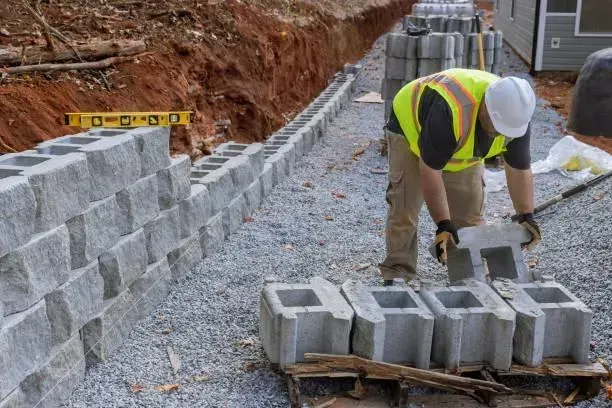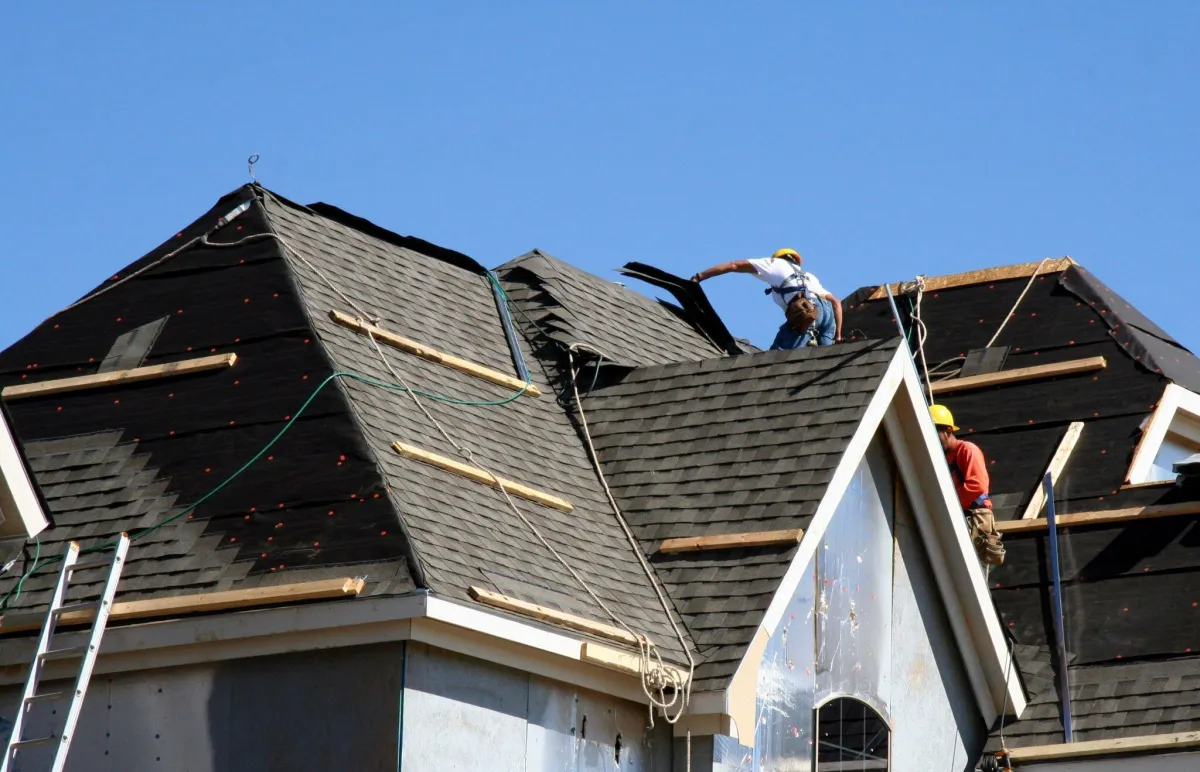Luxury Home Builder Fort Lauderdale from Twigden Custom Homes | Humble Texas Roofing Contractor | Retaining Wall Contractor in Apple Valley

Luxury Home Builders Fort Lauderdale FL Crafting Custom Masterpieces
Are you dreaming of living in a luxurious custom home tailored to your every desire? Look no further than the expertise of luxury home builders who specialize in crafting custom masterpieces. These builders have an unwavering attention to detail and a commitment to perfection, ensuring that every aspect of your dream home is flawlessly executed.
When you share your vision with these skilled professionals, they work tirelessly to bring your dreams to life. They understand that your home is not just a place to live but a reflection of your unique personality and style. These builders take the time to listen to your needs and wants, and then use their expertise to create a one-of-a-kind masterpiece that exceeds your expectations. With their guidance and knowledge, you can rest assured that every aspect of your custom home, from the layout and design to the most minor finishing touches, will be thoughtfully considered and meticulously executed. So, if you're ready to experience the pinnacle of luxury living, entrust your dreams to these luxury home builders and watch as they transform your vision into a breathtaking reality.
Attention to Detail and Perfection
You can't help but marvel at the impeccable attention to detail and sheer perfection that our luxury home builders bring to every custom masterpiece they create. From the moment they start working on a project, they meticulously plan every aspect, ensuring that no detail is overlooked. Whether it's the intricate woodwork, the flawless paint job, or the perfectly aligned tiles, our builders leave no room for error. They understand that even the smallest imperfections can detract from a luxury home's overall beauty and elegance.
Not only do our luxury home builders pay close attention to detail, but they also strive for perfection in every aspect of their work. They work tirelessly to ensure that every corner is perfectly square, every wall is flawlessly smooth, and every fixture is precisely installed. They understand that the difference between a good home and a truly exceptional one lies in the details. They take pride in their craftsmanship and are dedicated to creating homes that are visually stunning and built to last.
Our luxury home builders understand that perfection is not just about aesthetics but also functionality. They carefully consider the needs and preferences of each homeowner, ensuring that the layout and design of the home meet their exact specifications. They take the time to understand how the homeowner will use the space and incorporate personalized features that enhance their daily lives. From custom-built cabinetry to state-of-the-art technology, our builders go above and beyond to create homes that are beautiful and tailored to each homeowner's unique needs.
Our luxury home builders are masters of their craft, bringing impeccable attention to detail and sheer perfection to every custom masterpiece they create. They understand that every aspect of a luxury home, from the smallest details to the overall design, plays a role in creating a truly exceptional living space. So, if you're looking for a home that surpasses your wildest dreams, look no further. Our luxury home builders are here to turn those dreams into reality.
Bringing Dreams to Life
Creating bespoke residences that exceed imagination and transform aspirations into reality is what luxury home builders excel at. When bringing dreams to life, these builders understand the importance of personalization and attention to detail. They work closely with clients to understand their vision and turn it into a magnificent reality.
With a team of skilled architects, designers, and craftsmen, luxury home builders are able to create homes that are truly one-of-a-kind. They take the time to listen to their clients' desires and understand their unique tastes and preferences. From the initial design phase to the final finishing touches, every aspect of the home is carefully crafted to ensure it reflects the client's dreams and aspirations.
Bringing dreams to life starts with a detailed consultation, where the client's vision and ideas are discussed in depth. Luxury home builders take the time to understand every detail, from the layout and floor plan to the materials and finishes. They then use their expertise to translate these ideas into a concept that captures the essence of the client's dream home.
Throughout the construction process, luxury home builders pay meticulous attention to every aspect, ensuring that every detail is perfectly executed. No detail is overlooked, from the selection of the finest materials to the precision of the craftsmanship. The end result is a bespoke residence that not only exceeds expectations but also reflects the client's unique personality and style.
Luxury home builders have the expertise and passion to bring dreams to life. They understand the importance of personalization and attention to detail in creating bespoke residences that exceed imagination. By working closely with clients and paying meticulous attention to every aspect of the construction process, these builders can transform aspirations into reality and create truly one-of-a-kind masterpieces.
Impeccable Craftsmanship and Excellence
The artisans behind these bespoke residences exhibit unparalleled skill and dedication and elevate the art of construction to new heights. With every stroke of their tools and every meticulously placed brick, they create masterpieces that testify to their impeccable craftsmanship and unwavering commitment to excellence.
When you step into one of these luxury homes, you can immediately sense the attention to detail that has been poured into every corner. No aspect is overlooked from the perfectly aligned tiles to the flawlessly finished woodwork. The artisans understand that true luxury lies not only in the grandeur of the design but also in the small, intricate details that make a house feel like a home.
Their dedication to perfection is evident in every aspect of the construction process. They spend countless hours sourcing the finest materials, ensuring that only the best make their way into these custom residences. They work closely with architects and designers to bring their clients' vision to life, carefully balancing functionality with aesthetics. Each home is a unique masterpiece, tailored to the desires and dreams of the homeowner.
In the end, it is the combination of skill, dedication, and attention to detail that sets these luxury home builders apart. They understand that building a custom home is not just about constructing a house, but about creating an environment where memories are made and dreams are realized. With their impeccable craftsmanship and commitment to excellence, they transform the ordinary into the extraordinary, crafting homes that are truly works of art.

Luxury Home Builders Delivering Extravagant Homes Fort Lauderdale FL
Are you dreaming of living in a home that exudes opulence and sophistication? Look no further than luxury home builders who specialize in delivering extravagant homes that will leave you in awe. With their unparalleled craftsmanship and meticulous attention to detail, these builders go above and beyond to create a living space that surpasses even the highest expectations.
When you enter one of these luxurious homes, you'll immediately be greeted by the finest materials and finishes that money can buy. From exquisite marble countertops to gleaming hardwood floors, every aspect of the home is carefully curated to create a sense of grandeur. The attention to detail is evident in every corner, from the intricate crown molding to the custom-made cabinetry. No expense is spared in ensuring that every inch of the home reflects the epitome of luxury. So if you're ready to indulge in a truly lavish living experience, luxury home builders are here to make your dreams a reality.
Unparalleled Craftsmanship and Attention to Detail
With their unparalleled craftsmanship and attention to detail, luxury home builders deliver genuinely one-of-a-kind homes. When you walk into a luxury home, you are immediately struck by the impeccable quality of the materials used. Every element has been carefully selected from the marble countertops to the hardwood floors to create a sense of luxury and sophistication. The craftsmanship is evident in every corner of the home, from the intricately carved moldings to the perfectly aligned tiles. No detail is overlooked, ensuring that every aspect of the home is flawless.
In addition to the materials used, luxury home builders also pay meticulous attention to detail in the design and layout of the home. Every room is carefully planned to maximize both functionality and aesthetic appeal. From the spacious and well-appointed kitchens to the luxurious master suites, every space is designed with the homeowner's comfort and lifestyle in mind. The home's layout flows seamlessly, creating a sense of harmony and balance throughout. Every detail is a manageable size to be considered, from the placement of electrical outlets to the positioning of windows to maximize natural light.
The unparalleled craftsmanship and attention to detail that luxury home builders bring to their work sets them apart. They understand that building a luxury home is not just about creating a beautiful space but about creating a home that reflects the homeowner's unique style and personality. From the initial design phase to the final finishing touches, luxury home builders work closely with their clients to ensure that every detail is perfect. They take pride in their work and strive to exceed their clients' expectations. When you choose a luxury home builder, you can be confident that you are getting a truly one-of-a-kind home.
Creating a Truly Luxurious Living Experience
Imagine living in a home designed to provide the most opulent and indulgent living experience possible. Every aspect of your daily life is considered, from the moment you step foot into your grand entranceway to the time you retreat to your luxurious master suite. The luxury home builders behind this masterpiece have spared no expense creating a remarkable living space.
The finest materials and finishes greet you as you explore your new home. Every detail has been meticulously chosen from the gleaming marble floors to the handcrafted woodwork to create an atmosphere of elegance and sophistication. The attention to detail is evident in every room, with custom built-ins, intricate moldings, and designer lighting fixtures that add a touch of glamour and luxury.
But it's not just the physical elements of your home that make it luxurious. The layout and design have been carefully planned to maximize comfort and enjoyment. Open-concept living spaces flow seamlessly from one room to the next, allowing for easy entertaining and a sense of spaciousness. Expansive windows let in abundant natural light, creating a warm and inviting atmosphere throughout the home.
In addition to the stunning aesthetics, your home is equipped with the latest smart home technology. With just a button, you can control everything from the temperature and lighting to the security system and entertainment options. Your home becomes a haven of convenience and comfort, where every need is anticipated and met.
Living in a truly luxurious home is not just about the material possessions but about the experience it provides. It is a sanctuary where you can escape from the outside world and indulge in the finer things in life. With unparalleled craftsmanship and attention to detail, luxury home builders have created a living space that is truly extraordinary. So imagine, if you will, the joy and satisfaction of living in a home designed to deliver a truly luxurious living experience.
Indulging in the Epitome of Luxury Living
Step into a realm of pure luxury and let yourself be swept away by the absolute pinnacle of luxurious living. Indulging in the epitome of luxury living means surrounding yourself with the finest materials and exquisite craftsmanship. Every detail is carefully selected to create a lavish, elegant atmosphere that caters to your every desire. From the moment you step through the grand entrance, you will be captivated by the sheer beauty and grandeur that awaits you.
Imagine waking up in a master bedroom fit for royalty, with plush carpets underfoot and a breathtaking view of the sprawling estate. As you go to the ensuite bathroom, you are greeted by a marble-clad oasis, complete with a deep soaking tub and a rain shower that envelops you in a cascade of warm water. The attention to detail is evident in every corner, from the custom-made cabinetry to the designer fixtures that adorn the space.
As you move through the home, you will discover an array of luxurious amenities designed to enhance your lifestyle. A state-of-the-art home theater allows you to enjoy the latest blockbuster movies in the comfort of your own private cinema. A gourmet kitchen, equipped with top-of-the-line appliances and a spacious island, beckons you to indulge in your culinary passions. And when it's time to unwind, a private spa and wellness center offer a sanctuary for relaxation and rejuvenation.
In the epitome of luxury living, every aspect of your home is meticulously designed to create a haven of indulgence and comfort. From the lavish interiors to the expansive outdoor spaces, no expense is spared in creating an environment that is truly extraordinary. Step into this world of opulence and experience the ultimate in luxurious living.
Read more https://twigdencustomhomes.com/luxury-custom-home-builder_fort-lauderdale

Building Strong Foundations: Retaining Wall Contractors in Apple Valley
In the picturesque landscapes of Apple Valley, California, where rugged terrain meets stunning vistas, the need for reliable retaining walls is paramount. Retaining walls not only provide essential structural support but also enhance the aesthetic appeal and functionality of outdoor spaces. For homeowners and property developers in Apple Valley seeking to fortify their landscapes, partnering with skilled retaining wall contractors is essential. Let's delve into the world of retaining wall contractors in Apple Valley and explore how they can help transform outdoor spaces with durable and beautiful retaining walls.
The Importance of Retaining Walls:
Retaining walls serve a crucial role in managing soil erosion, preventing slope instability, and creating level terraces in uneven landscapes. Whether it's preventing soil erosion around a hillside property or creating usable outdoor spaces on sloping terrain, retaining walls are indispensable elements of landscaping design in Apple Valley. Additionally, well-designed retaining walls can enhance property value, curb appeal, and overall functionality, making them a wise investment for homeowners and property developers alike.
Finding the Right Retaining Wall Contractor:
When searching for retaining wall contractors in Apple Valley, it's essential to choose professionals with the expertise, experience, and resources to tackle your project effectively. Here's how you can find the right contractor for your retaining wall needs:
Online Research: Utilize online directories, search engines, and review websites to compile a list of retaining wall contractors operating in Apple Valley. Pay attention to customer reviews, ratings, and testimonials to gauge the reputation and reliability of each contractor.
Local Recommendations: Seek recommendations from friends, family, neighbors, or local landscaping professionals who have experience working with retaining wall contractors in Apple Valley. Personal referrals often provide valuable insights and help narrow down your options to reputable contractors.
Credentials and Experience: Verify that each retaining wall contractor you consider is licensed, insured, and experienced in designing and building retaining walls in Apple Valley. Ask about their portfolio of past projects, certifications, and specialized skills relevant to your specific needs.
Consultation and Design: Schedule consultations with prospective retaining wall contractors to discuss your project goals, preferences, and budget. A reputable contractor will conduct a thorough site assessment, listen to your needs, and offer creative solutions tailored to your landscape.
Cost and Timeline: Request detailed cost estimates and project timelines from each contractor to compare pricing and services offered. Be wary of contractors who provide significantly lower estimates or promise unrealistic timelines, as this may indicate a lack of expertise or potential for subpar workmanship.
Communication and Transparency: Choose a retaining wall contractor who communicates effectively, responds promptly to inquiries, and maintains transparency throughout the project. Clear communication is essential for ensuring that your vision is understood and executed to your satisfaction.
Executing the Project:
Once you've selected a retaining wall contractor in Apple Valley, it's time to embark on the construction process. Your contractor will oversee every aspect of the project, from obtaining necessary permits to excavating the site, constructing the retaining wall, and finishing with appropriate drainage and landscaping. Throughout the process, communication between you and the contractor is key to addressing any concerns or adjustments promptly.
Benefits of Professional Retaining Wall Contractors:
Partnering with a professional retaining wall contractor in Apple Valley offers numerous benefits, including:
Expertise in designing and constructing retaining walls that comply with local building codes and regulations.Access to high-quality materials, equipment, and techniques to ensure durable and long-lasting retaining walls.Efficient project management and coordination to minimize disruptions and ensure timely completion.Warranty protection and ongoing maintenance services to safeguard your investment and preserve the integrity of your retaining walls.
Conclusion:
Retaining walls are essential elements of landscaping design in Apple Valley, offering both practical and aesthetic benefits for homeowners and property developers. By partnering with skilled retaining wall contractors, you can transform your outdoor spaces with structurally sound, visually appealing retaining walls that enhance the beauty and functionality of your landscape. Invest in the expertise of retaining wall contractors in Apple Valley, and build strong foundations for your outdoor living spaces that stand the test of time.
Learn more: https://concreteessentialsco.com/retaining-walls

Covering Your Home: Roofing Contractors in Humble, Texas
The roof of your home stands as its first line of defense against the elements, shielding you and your loved ones from rain, wind, and sun. In the charming community of Humble, Texas, where southern hospitality meets suburban tranquility, ensuring the integrity of your roof is paramount. Thankfully, a myriad of roofing contractors in Humble are ready to provide their expertise and craftsmanship to keep your home safe and secure. Let's explore the world of roofing contractors in Humble, Texas, and how they can help you maintain a sturdy and reliable roof over your head.
The Importance of a Strong Roof:
A sturdy roof is more than just a structural element; it's a symbol of security and protection for your home and family. In Humble, where the weather can be unpredictable, with heavy rainstorms, scorching summers, and the occasional hurricane, having a reliable roof is essential. A well-maintained roof not only keeps your home dry and comfortable but also enhances its curb appeal and resale value. Therefore, investing in professional roofing services is an investment in the longevity and value of your home.
Finding the Right Roofing Contractor:
With numerous roofing contractors vying for your attention in Humble, Texas, it's crucial to choose the right one for your needs. Here's how you can navigate the selection process effectively:
Research and Recommendations: Start by conducting online research to compile a list of reputable roofing contractors in Humble. Websites like Yelp, Angie's List, and Google Reviews offer valuable insights into the experiences of past customers. Additionally, seek recommendations from friends, family, and neighbors who have recently had roofing work done.
Credentials and Experience: Verify that the roofing contractors on your list are licensed, insured, and have relevant experience in the industry. Look for certifications from reputable organizations and inquire about their track record of successful projects in Humble. An experienced contractor is more likely to deliver quality workmanship and customer satisfaction.
Services Offered: Consider the range of services offered by each roofing contractor, including roof inspections, repairs, replacements, and maintenance. Ensure that the contractor you choose specializes in the type of roofing materials and systems used in your home, whether it's asphalt shingles, metal roofing, or tile roofing.
Quality of Materials: Inquire about the quality of materials used by the roofing contractor and whether they offer warranties on their products and workmanship. High-quality materials are essential for ensuring the durability and longevity of your roof, especially in the harsh climate of Humble, Texas.
Customer Reviews and Testimonials: Take the time to read customer reviews and testimonials to gauge the reputation and reliability of each roofing contractor. Pay attention to feedback regarding communication, timeliness, cleanliness, and overall satisfaction with the roofing services provided.
Choosing a Humble Texas Roofer:
When selecting a roofing contractor in Humble, Texas, it's essential to prioritize professionalism, reliability, and quality craftsmanship. A Humble Texas roofer understands the unique challenges and requirements of roofing projects in the area and is committed to delivering exceptional results. Whether you're in need of roof repairs, replacements, or maintenance, a Humble Texas roofer can provide the expertise and service you need to keep your home safe and secure.
Executing Your Roofing Project:
Once you've chosen a roofing contractor in Humble, Texas, it's time to embark on your roofing project. The contractor will begin by conducting a thorough inspection of your roof to assess its condition and identify any issues or areas of concern. Based on their assessment, they will recommend the appropriate course of action, whether it's repairing damaged shingles, replacing worn-out flashing, or installing a new roof altogether.
Throughout the roofing process, your chosen contractor will keep you informed and involved, providing regular updates on the progress of the project and addressing any questions or concerns you may have. They will work diligently to complete the project on time and within budget, ensuring minimal disruption to your daily life.
Conclusion:
In Humble, Texas, where the community values craftsmanship, integrity, and reliability, finding the right roofing contractor is essential for protecting your home and family. By partnering with a reputable Humble Texas roofer, you can rest assured that your roof is in capable hands. Invest in the expertise and service of a trusted roofing contractor, and enjoy the peace of mind that comes with a sturdy and reliable roof over your head.
Learn more: https://houstontexascontractor.com/roofing

Luxury Home Builders Raise The Bar Fort Lauderdale FL
Are you in the market for a new luxury home? Well, you're in luck because luxury home builders are raising the bar and pushing the boundaries of design and architecture. These builders are not just constructing houses; they are creating works of art that will leave you in awe. From cutting-edge technology to innovative materials, these builders use every tool to create genuinely one-of-a-kind homes.
When it comes to luxury homes, customization is key, and luxury home builders understand that. They are dedicated to creating personalized spaces that reflect your unique style and taste. Whether you prefer a minimalist and modern design or a more traditional and ornate look, these builders will work closely with you to bring your vision to life. From the layout of the rooms to the selection of materials and finishes, every detail of your new home will be tailored to your preferences. So, get ready to step into a truly your own space.
In addition to their focus on design and customization, luxury home builders are also committed to sustainability and functionality. They understand that a luxury home should be beautiful, environmentally friendly, and efficient. These builders incorporate sustainable materials and energy-saving features into their projects, ensuring that your home is luxurious and eco-friendly. From solar panels to smart home technology, these builders are embracing the latest advancements in sustainable living. And let's not forget about functionality – these homes are designed to make your life easier. From well-thought-out storage solutions to state-of-the-art appliances, every aspect of your home will be designed with your convenience in mind.
So, if you're ready to experience the epitome of luxury living, look no further than the innovative luxury home builders raising the bar. From their attention to detail to their commitment to sustainability, these builders are creating truly extraordinary homes. Get ready to step into a space that is not only beautiful but also uniquely yours.
Innovative Design and Architecture
You'll be amazed by the innovative design and architecture that luxury home builders are bringing to the table. These builders are constantly pushing the boundaries of what is possible, creating homes that are truly one-of-a-kind. From sleek, modern designs to traditional and timeless architecture, there is something for everyone's taste. These luxury homes are not just houses; they are works of art.
One of the most impressive aspects of the innovative design and architecture in luxury homes is the use of cutting-edge technology. Builders are incorporating smart home features that allow homeowners to control everything from the lighting to the temperature with a button. These homes have state-of-the-art security systems, energy-efficient appliances, and even automated window coverings. The integration of technology into the design of these homes creates a seamless and luxurious living experience.
In addition to the technological advancements, luxury home builders are also taking inspiration from nature to create stunning architectural designs. Many homes are designed to seamlessly blend into their natural surroundings, with large windows that offer breathtaking views and bring the outdoors in. Builders are also utilizing sustainable materials and incorporating green building practices to create homes that are not only beautiful but also environmentally friendly. The combination of innovative design, advanced technology, and sustainable practices sets these luxury homes apart from the rest.
Luxury home builders are raising the bar regarding innovative design and architecture. With their use of cutting-edge technology, inspiration from nature, and commitment to sustainable practices, these builders are creating truly extraordinary homes. Whether you're looking for a sleek and modern design or a traditional and timeless architectural style, luxury home builders have something to offer. Get ready to be amazed by these luxury homes' innovative design and architecture.
Personalized and Customized Interiors
Get ready to experience interiors that are tailored to your unique preferences and designed to exceed all expectations. Luxury home builders understand the importance of creating personalized and customized spaces that truly reflect the tastes and lifestyles of their clients. From the moment you step into your new home, you will be greeted by a sense of individuality and sophistication that is unmatched. Every detail, from the color palette to the furniture selection, will be carefully chosen to create a truly yours space.
One of the key aspects of personalized and customized interiors is the attention to detail. Luxury home builders understand that it is the small touches that make a big difference. From custom cabinetry and built-in storage solutions to unique lighting fixtures and one-of-a-kind art pieces, every element of your home will be thoughtfully selected to create a functional and beautiful space. The goal is to create a space that meets your needs and enhances your everyday life.
In addition to the attention to detail, luxury home builders also offer a wide range of customization options. Whether you prefer a modern minimalist style or a classic and traditional look, you can work closely with the builders and designers to create a space that perfectly suits your taste. From selecting the materials and finishes to choosing the layout and floor plan, every aspect of your home can be customized to your liking. The result is a home that is not only luxurious but also a true reflection of your personality and style.
Personalized and customized interiors are a hallmark of luxury home builders. By paying attention to detail and offering a wide range of customization options, these builders create homes tailored to their clients' unique preferences. Get ready to experience a space that exceeds all expectations and truly feels like home. From the color palette to the furniture selection, every element of your new home will be designed with your individuality in mind.
Sustainability and Functionality
Prepare to be amazed by how sustainable and functional these custom interiors can be, crafted with every detail carefully considered to enhance your everyday life. Luxury home builders are raising the bar by incorporating sustainable materials and technologies into their designs, ensuring that your home is not only beautiful but also environmentally friendly. From energy-efficient appliances to solar panels and rainwater harvesting systems, these homes are built with sustainability in mind. Not only will you be reducing your carbon footprint, but you'll also enjoy the benefits of lower utility bills and a healthier living environment.
Functionality is another key aspect that luxury home builders are prioritizing. These custom interiors are designed to cater to your specific needs and lifestyle. Imagine a home where every space has a purpose and is optimized for maximum efficiency. From well-designed storage solutions to smart home automation, these homes are built to make your life easier. Whether it's a spacious kitchen with top-of-the-line appliances or a luxurious master suite with a walk-in closet and a spa-like bathroom, these homes are designed to provide you with the ultimate comfort and convenience.
In addition to sustainability and functionality, luxury home builders are also focusing on creating spaces that promote overall well-being. Natural light is maximized through strategically placed windows and skylights, creating a bright and welcoming atmosphere. Indoor air quality is also a priority, with ventilation systems and low VOC materials used throughout the home. These custom interiors are designed to be a sanctuary, a place where you can relax and rejuvenate after a long day. With a focus on sustainability, functionality, and well-being, luxury home builders are setting a new standard in custom interior design.